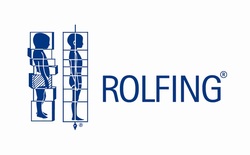Frequently Asked Questions
|
People who experience chronic pain, poor posture, restricted movement, and other physical issues may consider Rolfing. Additionally, athletes, dancers, and performers may also seek Rolfing to improve their performance and prevent injuries.
The Rolfing 10 Series is a series of ten Rolfing sessions designed to systematically address the body's alignment and structure. Each session focuses on a specific area of the body, and the series as a whole aims to create a more balanced and integrated body.
Rolfing works by manipulating the fascia using deep tissue massage and other manual techniques. The goal is to release tension and realign the body to improve its function and decrease pain.
During the session, You will either stand or lie on a padded table as the practitioner applies pressure and movement to various parts of your body. They may also ask you to move or breathe in specific ways to facilitate the process.
The practitioner may ask the client to participate by breathing or moving in a certain way, but generally, the client is not expected to do anything specific during a Rolfing session.
During a Rolfing session, you will typically wear comfortable, minimal clothing (such as underwear or a swimsuit) to allow the practitioner to access and manipulate the fascia effectively.
Rolfing can have emotional and psychological effects, as releasing physical tension can also release emotional tension. Some clients may experience feelings of relaxation, lightness, and increased energy, while others may experience emotional releases such as crying or laughing.
For clients whom have never gone through any Rolfing sessions prior, it is highly encouraged to schedule and complete the 10 sessions. By doing so we can address the issues holistically. After which you may choose to continue with additional single sessions as needed.
The long-term benefits of Rolfing may include improved posture, decreased pain, increased flexibility and mobility, better athletic performance, and improved overall well-being.
Rolfing can be uncomfortable, as it involves deep tissue manipulation. However, it should not be excessively painful. Clients should communicate with their practitioner if they experience any discomfort during the session.
|

"This is an important concept: that practitioners are integrating something; we are not restoring something. This puts us in a different class from all other therapists that I know of. It takes us out of the domain designated by the word "therapy," and puts us in the domain designated by the word "education." It puts our thinking into education: how can we use these ideas behind Structural Integration? How do we put a body together so that it's a unit, an acting, energy efficient unit? One of the differences between Structural Integration Practitioners and practitioners of medicine, osteopathy, chiropractic, naturopathy, etc., is that the latter are all relieving symptoms. They make no effort to put together elements into a more efficient energy system."
-Ida P. Rolf, Ph.D. (founder of Rolfing® Structural Integration)
Copyright © 2014 dhayangtoon.com. All rights reserved


